|
TennisOne Lessons The Backhand Volley: Dave Smith As an instructor, teaching the volley is relatively easy. Unlike groundstrokes where a plethora of grips, stances, swing options, and spin choices can vary even among top players, the volley mechanics remain fundamentally the same among almost all skilled players. A simple review of the volleys by the many pros featured in TennisONE's ProStrokes Gallery will clearly substantiate this statement. And that is exactly what we are going to do here! The GripWith the exception of a few aging “tennis gurus” who insist that the elementary Eastern forehand and backhand grips should be used by all players when executing volleys, it is generally agreed by current teaching authorities that the Continental grip is the foundation-of-choice by today's top players. While it is certainly easier for beginners to gain some immediate gratification, comfort, and relative success using the Eastern grips, their long-term progression and ultimate improvement will almost certainly be sacrificed. This detrimental methodology of starting players off with the Eastern grips - or worse yet, advocating their use by advanced players (when virtually no advanced players use these grips!) creates a dilemma.
When players eventually recognize the disadvantages and faults associated with the Eastern grips, making changes from this rudimentary form to the progressively-orientated continental grip is uncomfortable, frustrating and, in the vast majority of cases, next to impossible!
Unbelievably, most of the nearly 60 books I own on tennis propose this transitory methodology: changing a player's form after a player first becomes comfortable using the more elementary grips. Want to screw up a tennis player for life? Teach them methods they will have to change at some later point! Of the 3000-plus players I have taught, a huge number of these students acknowledged a need to change from what they had been taught as beginners to what they now know will help them advance. Yet, making this recognized change is next to impossible for the vast majority of players. No other sport teaches such a transitional method of learning. Save yourself years of frustration: Learn it right from the start! Employing visual cues and comparisons of some of the top players can help determine a progressive course of practice to improve your own volley. While providing several examples of these visual tools, I will address several of the common fundamental patterns that some of the top world-class players utilize while hitting the volley.
The Backhand VolleyBoth Rafter and Sampras initiate the upper body turn as soon as they make the decision to attack the backhand volley. Both players move forward with their upper body sideways to the net while their feet propel them forward to meet the ball. The off-hand supports the racquet while the racquet head is held high. Even though these champions possess the skill, each limits the size of the swing to ensure the quality and consistency of the shot. Top players understand any approach volley must be well placed, favoring depth and/or placement over outright power. Power is great, but only if it is controllable. Another point: Typically, it is difficult to generate power and maintain control on balls hit to you with minimal pace. Thus, it is important to minimize the swing on all volleys, especially floaters, to lower the incidence unforced errors on such shots. Slice the Volley for Accuracy and ControlLet's compare the volleys of Hewitt, Sampras, and Rafter. Contact by all three players is virtually identical. The players remain sideways almost at a perfect 90-degree angle to the net or desired trajectory. All three players drive down and through the ball with an unmistakable slicing motion. This action is done for many reasons. Certainly the spin action on the ball creates a lower bounce for the opponent to negotiate a passing shot. However, the slicing action also creates several other advantageous effects that all players should recognize and attempt to emulate.
The action of slicing the volley prevents the racquet from rolling over the ball or hitting it too flat. By maintaining the racquet head in the same “plane” throughout the shot, a player has a much greater chance at directing the ball to the desired target. (Rolling the racquet is common among players using Eastern grips. As Arthur Ashe once said, “whether you like it or not, you are going to hit some amount of topspin with an Eastern grip, even if you think you are hitting flat.”) Maintaining the racquet head in the same plane during the slice allows for actual aiming to take place. A player who rolls the racquet in an attempt to create more power or simply out of habit changes the hitting surface during contact. Thus aiming is basically meaningless. For example, if a player who rolls the racquet head at contact hits early, he will hit the ball into the bottom of the net. Let's say he decides on the next similar shot to aim higher. If he rolls the racquet a split second later, the ball is jettisoned long due to the racquet not closing in time. The slicing of a volley changes a percentage of the force applied to the ball from velocity to spin. Obviously, standing near the net brings you closer to your opponent's baseline. Lower volleys or volleys hit from a deeper position from the net are generally hit up at an angle in order to clear the net. Players who notoriously hit flat volleys end up hitting balls far out because of the precision necessary to control such a ball. By slicing the ball, the players can still hit the ball with a firm stroke, yet control the desired depth by using spin to their advantage. They can hit with greater error room over the net as well.
In reality, “dinkers” are created by this tendency to hit balls too flat. Dinkers traditionally end up hitting hard flat balls out or into the net. Because they don't have the capacity to use slice for control, dinkers end up hitting progressively softer flat shots until they can get the ball in consistently. A percentage of balls hit while volleying are usually dropping somewhat prior to contact. (If you are volleying a well-hit ball that is rising, you are probably hitting an out ball!) The slicing action helps all players overcome the ball's natural downward angle-of-reflection off a flat racquet face. Here is a simple analogy. Imagine your racquet is a mirror. If the ball were a beam of light, it would reflect downward at an angle similar to it's incoming angle. (The angle of incidence of a beam of light is equal to the angle of reflection off a mirror.) Gravity will increase the downward angle that the ball rebounds off the flat racquet face as well. One additional element that affects the angle of reflection: Spin. An incoming ball with underspin will rebound downward at a steeper angle off a flat racquet face than a ball that is incoming with topspin.
This helps explain why so many people bury even reasonably easy volleys that are well above the net into the bottom of the net! Players often fail to comprehend these rebound characteristics of a ball off a flat racquet face. Arm MotionThe arm swings pivotally around the shoulder joint causing the racquet to follow the arm's movement. This swing pattern creates a constantly changing racquet face on high balls. As a result, most skilled players will add some slice on high balls to help maintain a consistent racquet face angle through the contact point. One aspect which is especially common among skilled players is the limited movement of the elbow joint during the entire course of the backhand volley. This key component allows for greater leverage. It also negates the necessary control of an extra joint during the backhand volley stroke. Note that Rafter has a slightly bent elbow throughout the course of his swing while Sampras and Hewitt have the more common straight arm position. Some players, like Sampras will straighten the arm just prior to contact while other players, especially Hewitt, maintain a very straight arm almost from the moment they make their turn sideways in preparation for the backhand volley. (See Hewitt's backhand volley in ProStrokes Gallery!) What is important is that the majority of the swing is accomplished through the arm's motion and not the elbow joint extension from a flexed position. Another common facet among top players is the opposing action of the off-arm. Notice how the off-arm drives backwards during the contact phase of the swing. The reason for this is simple, in order to drive the racquet through the line of trajectory, the player must remain sideways. To help prevent the natural tendency of the body to rotate around during the volley, this movement of the off-arm maintains the sideways position desired during contact.
The follow-through for all three players is also similar. Each player maintains the same wrist position holding the racquet head up as prior to contact. (Hewitt does tend to drop his racquet head slightly, but this is done long after contact. Many skilled players will do this as a relaxation phase of the shot. Beginners are told not to do this because they tend to drop the head during contact instead of after!) Using the CariocaNotice how the back leg actually moves slightly behind the front leg on volleys when these players must move rapidly forward. This “carioca” step serves a similar purpose as the off-arm: it helps the player remain sideways. If the player allowed the back leg to swing around as in another running step, the hips would rotate around defeating the goal of remaining sideways.
Players who allow their back leg to swing through while attempting forward-moving backhand volleys usually pull the ball to the right (right-handed players). As a result of “stepping through the shot”, players unconsciously tend to lay their racket heads back to compensate for the early rotation of the body. This results in players pushing the ball away from them instead of efficiently driving the ball across their body toward the desired target. It is obvious from comparing the images of these three champions, and those of the many others you can find in the TennisONE ProStrokes Gallery, there are very explicit mechanics which are essential for successful backhand volleys. Certainly, if the vast majority of top players employ such mechanics, it would be in your best interest to employ them also. Regardless of your age, current playing ability or previous tennis experience, learning these movements and practicing them until they become routine could substantially improve your backhand volley and your game. Your comments are welcome. Let us know what you think about Dave Smith's article by emailing us here at TennisOne .
HIDDEN MICKEY 
If you are a fan of anything DISNEY, Dave Smith (better known as Senior Editor for TennisOne and author of two prolific tennis books TENNIS MASTERY & COACHING MASTERY), has just published an exciting and compelling novel, HIDDEN MICKEY. This Action-Adventure story centers around three friends who discover a secret journal penned by the master storyteller himself, Walt Disney. The diary hints at hidden treasure and sends the three friends on a wild cross-country search, following intriguing clue after clue and finding incredible discoveries about the great man, his life...and about themselves. For anyone who loves Disneyland or all things Disney, Hidden Mickey is a MUST READ. Limited First Edition, signed and numbered copies, available.
David has taught over 3000 players including many top national and world ranked players. He can be reached at acrpres1@email.msn.com. |
|||||||||||||||||||||
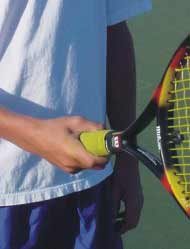
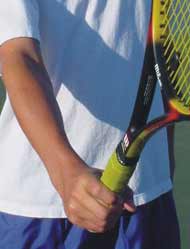
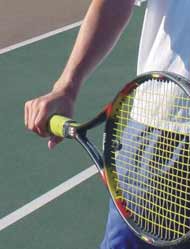
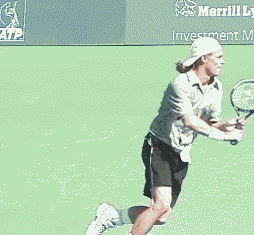
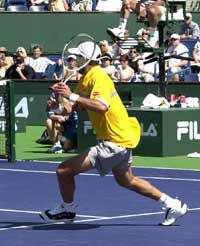
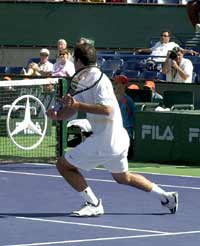
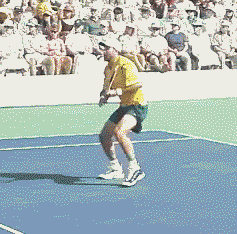
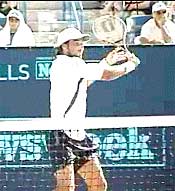
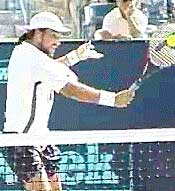
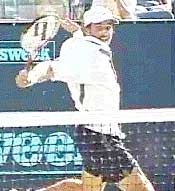
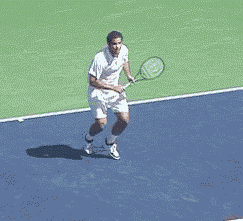
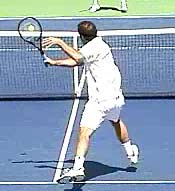
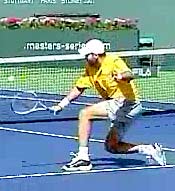
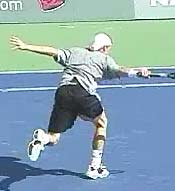
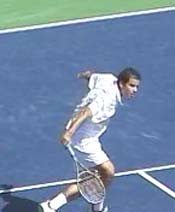
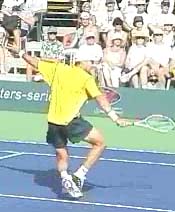
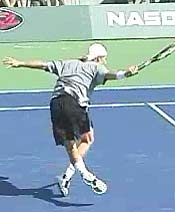
 Your comments are welcome. Let us know what you think about this article by
Your comments are welcome. Let us know what you think about this article by